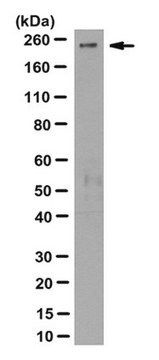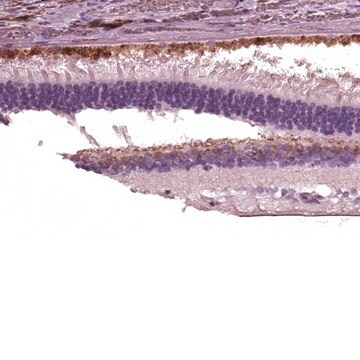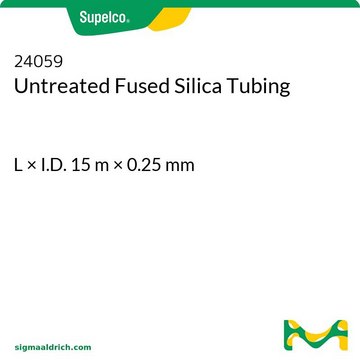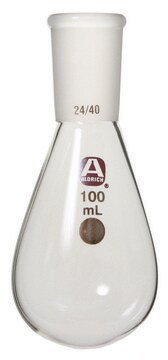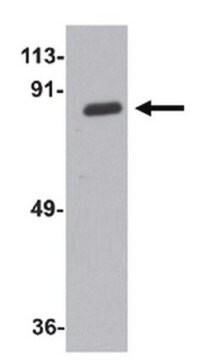MABT29
Anti-Ninein Antibody, clone 79-160-7
clone 79-160-7, from mouse
Sinônimo(s):
ninein (GSK3B interacting protein), Glycogen synthase kinase 3 beta-interacting protein, ninein centrosomal protein, GSK3B-interacting protein
About This Item
Produtos recomendados
fonte biológica
mouse
Nível de qualidade
forma do anticorpo
purified antibody
tipo de produto de anticorpo
primary antibodies
clone
79-160-7, monoclonal
reatividade de espécies
human
técnica(s)
immunoprecipitation (IP): suitable
western blot: suitable
Isotipo
IgG2aκ
nº de adesão NCBI
nº de adesão UniProt
Condições de expedição
wet ice
modificação pós-traducional do alvo
unmodified
Informações sobre genes
human ... NIN(51199)
Descrição geral
Imunogênio
Aplicação
Immunoprecipitation Analysis: The antibody has been shown to immunoprecipitate Ninein in L929 cells. (Delgehyr, 2005).
Qualidade
Western Blot Analysis: 1 µg/mL of the antibody detected Ninein in 10 µg of Hek293 cell lysate.
Descrição-alvo
forma física
Outras notas
Não está encontrando o produto certo?
Experimente o nosso Ferramenta de seleção de produtos.
Código de classe de armazenamento
12 - Non Combustible Liquids
Classe de risco de água (WGK)
WGK 1
Ponto de fulgor (°F)
Not applicable
Ponto de fulgor (°C)
Not applicable
Certificados de análise (COA)
Busque Certificados de análise (COA) digitando o Número do Lote do produto. Os números de lote e remessa podem ser encontrados no rótulo de um produto após a palavra “Lot” ou “Batch”.
Já possui este produto?
Encontre a documentação dos produtos que você adquiriu recentemente na biblioteca de documentos.
Nossa equipe de cientistas tem experiência em todas as áreas de pesquisa, incluindo Life Sciences, ciência de materiais, síntese química, cromatografia, química analítica e muitas outras.
Entre em contato com a assistência técnica
